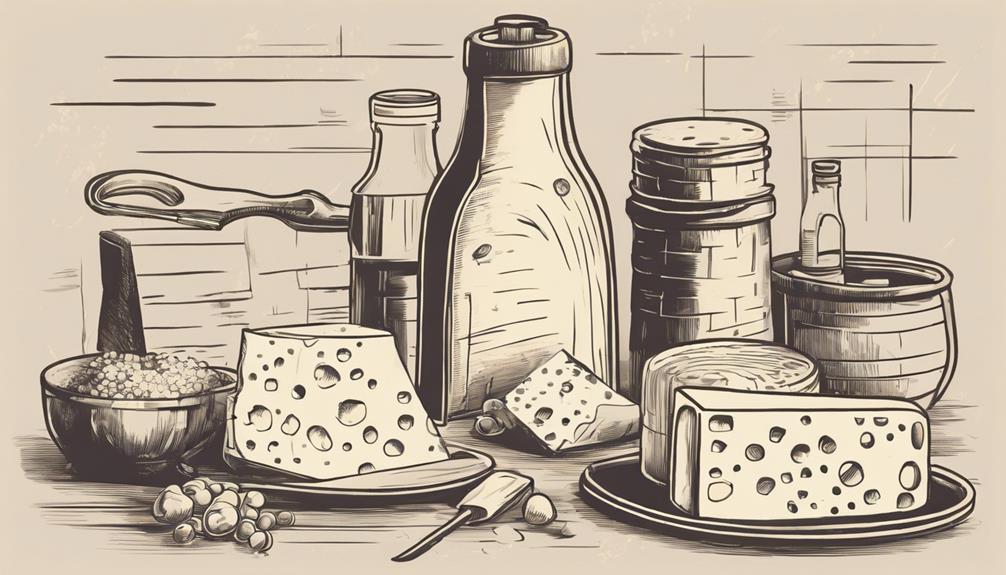See All: Cheese Making
Watch How To Do This Here…
YES! You can make cheese at home. Take our FREE 4-Part video training series to simplify cheesemaking for everyone. No waste. No overwhelm. No missing steps. You can make delicious, healthy cheese, even if you only have access to grocery store milk and regular kitchen equipment…
Click Here To Watch Step By Step Now
“I’ve been making cheese for a few years now, and I’ve recently encountered a problem where my cheese turns out gritty or grainy. It’s really frustrating, especially when I’m trying to share my cheese with friends and family. Could you explain what might be causing this issue and how to prevent it? I’m located in Minnesota, USA.” cheers, Jessica, Minneapolis, USA.
What Causes Cheese to be Gritty or Grainy?
Hi Jessica! Gritty or grainy cheese can be a frustrating issue, especially when you want to share your cheese with loved ones or even just enjoy it yourself. Let’s break down what could be causing your cheese to have that less-than-ideal texture and explore ways to prevent it from happening in the future.
1. The Science Behind Grittiness and Graininess
Cheese texture issues often boil down to the structure of the proteins and fats in the cheese. Here are some factors that can influence this structure:
- Calcium Lactate Crystals: These can form on the surface of aged cheese, especially if not stored properly.
- Protein and Fat Balance: The composition of proteins and fats plays a significant role in the final texture of the cheese.
- Moisture Content: Excessive moisture or too little can cause unfavorable textures.
Understanding these basic scientific aspects can help in troubleshooting and improving your cheese-making process.
2. Calcium Lactate Crystals
One of the primary culprits for grainy texture in cheese, especially aged varieties like Cheddar, is the formation of calcium lactate crystals. These tiny crystals can form during aging and are usually harmless, but they can create an undesirable gritty texture.
Causes:
- Storage Conditions: If the cheese is not stored at the appropriate temperature and humidity, it can lead to crystal formation.
- Aging Process: Prolonged aging or irregularities in the aging process can also contribute to crystal development.
Prevention:
- Controlled Environment: Store your cheese in a controlled environment with the right temperature and humidity levels, ideally in a cheese cave or specialized refrigerator.
- Regular Monitoring: Frequently check the cheese during the aging process to ensure that the conditions are consistent.
3. Protein and Fat Balance
The balance between proteins and fats is crucial for achieving the desired texture in cheese. Imbalances can lead to a variety of texture problems, including grittiness.
Causes:
- Incorrect Ratios: Using the wrong milk composition can affect protein and fat balance.
- Process Errors: Mistakes during coagulation or curd formation can disrupt the texture.
Prevention:
- Milk Selection: Use high-quality milk with a balanced protein and fat content. This will generally yield a better-curd texture.
- Accurate Measurements: Ensure you are accurately measuring and adding ingredients such as rennet and cultures.
4. Moisture Content
Getting the moisture content just right is another critical factor. Too much or too little moisture can lead to gritty textures in cheese.
Causes:
- Improper Pressing: Not pressing the cheese curds adequately can leave excess moisture.
- High Acidity: Excess acidity can break down proteins and create an undesirable texture.
Prevention:
- Pressing Techniques: Make sure to press the curds appropriately to remove the right amount of whey.
- pH Monitoring: Keep an eye on the pH levels during the cheese-making process to avoid high acidity.
5. Role of Salting
Salting plays a role in both the flavor and texture of cheese. Incorrect salting can lead to grainy textures as well.
Causes:
- Over-Salting: Too much salt can cause protein precipitation, leading to gritty textures.
- Inconsistent Salt Distribution: Uneven salt distribution can create textural irregularities.
Prevention:
- Proper Salting Techniques: Ensure you’re using the correct amount of salt and distributing it evenly.
- Stirring: Stir the curds well after adding salt to ensure even distribution.
6. Role of Temperature
Temperature control is crucial throughout the cheese-making process. Incorrect temperatures during key stages can also contribute to grittiness.
Causes:
- High Cooking Temperatures: Excessive temperatures can denature proteins, leading to grainy textures.
- Storage Temperature: Incorrect storage temperatures can affect texture.
Prevention:
- Accurate Temperature Control: Use reliable thermometers to maintain correct temperatures during cheese-making and storage.
- Monitoring: Consistently monitor temperatures at each stage to ensure they stay within optimal ranges.
7. Bacteria and Cultures
The types of bacteria and cultures used in cheese-making also impact texture. The wrong combinations or proportions can lead to gritty cheese.
Causes:
- Imbalanced Cultures: Using imbalanced or incorrect bacteria can affect fermentation and texture.
- Old Cultures: Outdated or improperly stored cultures can also lead to issues.
Prevention:
- Fresh Cultures: Always use fresh, high-quality cultures suitable for the type of cheese you’re making.
- Proper Storage: Store cultures according to the manufacturer’s instructions to maintain their effectiveness.
Final Thoughts…
Jessica, hopefully, this detailed look into what causes cheese to be gritty or grainy gives you some insight to perfect your cheese-making endeavors. Aim to control factors like calcium lactate crystal formation, balance of proteins and fats, moisture content, salting techniques, and temperature control. Addressing these areas will lead you to smoother, creamier cheeses that you’ll be proud to share.
Thank you for your question, Jessica! Keep experimenting and refining your process. The best cheese-makers learn from each batch and continuously improve. Happy cheese-making!
Return To: Cheese Making
Free Step By Step Cheese Making Videos…
YES! You can make cheese at home. Take our FREE 4-Part video training series to simplify cheesemaking for everyone. No waste. No overwhelm. No missing steps. You can make delicious, healthy cheese, even if you only have access to grocery store milk and regular kitchen equipment…

